Dell XPS 13 Review (2015): The Windows Laptop To Beat
Are you thinking of buying a Windows laptop? Don't, until you've read this review. The new Dell XPS 13 isn't perfect, but it's freaking incredible for the $800 you'll spend to bring one home.
What Is It?
The latest version of Dell's 13-inch MacBook Air competitor, now thinner and lighter than before. A laptop with a screen that practically looks like it's floating on air thanks to crazy-thin bezels. A premium laptop with a shiny aluminum chassis, silky carbon fiber palmrests, and a precision touchpad. A laptop that somehow manages to offer all that and a lovely 1080p matte screen for just $800. Or a QHD+ touchscreen for $1300. A tiny Windows laptop that manages to fit a full-size SD card slot.
That Sounds Perfect! What's Wrong?
Dell quotes up to 15 hours of battery life, and I struggled to get even half that in the real world. Though some laptop reviewers may say the XPS 13's is on par with or better than a 13-inch MacBook Air, I tried them both side by side and the Air lasted several hours longer.
Design
Yes, it kinda looks like a MacBook Air. With a few notable exceptions, that's how PC manufacturers build thin Windows laptops these days. That's just what laptops look like now. Which is fine! Besides, for my money this sleek silver-and-black MBA alternative completely trashes Apple when it comes to look and feel. For starters, it crams a 13-inch 1080p (or better!) screen into a laptop closer to the size and weight of the 11-inch MacBook Air, and without sacrificing my precious SD card slot. Those thin bezels make the Air's giant silver borders stick out like sore thumbs, too.
But there's also the experience to consider. When I sit down with a MacBook Air, there's bare, abrasive metal under my wrists. My palms heat up when the machine gets warm. The screen throws off glare. Riding the Caltrain to San Francisco and back, the smooth metal chassis threatens to slide off my inclined lap and tip over backwards. Not this Dell. Carbon fiber surfaces, anti-skid rubber feet and the matte screen take care of all those issues. And not in a cheap way, too. The whole laptop feels finely crafted in a way that MacBook competitors have rarely ever managed.
And the things everyone praises Apple for—an incredible touchpad and keyboard—are nicely replicated here on the XPS 13 too. Which is to say that the keyboard is thin—very thin—but quite sensitive and adequately cushioned so my fingers don't get sore from bottoming out, and the touchpad is insanely responsive and accurate. It's so good.
You've got to understand that for years, most touchpads on thin Windows laptops have been ludicrously bad, to the point where saying "This is the best touchpad I've ever used on a Windows machine" wasn't much of a compliment. Here, though, a precision touchpad using Microsoft's own drivers feels just as good as Apple. If you ask me, clicking down on the pad's integrated button actually feels better. No idea why it took so freaking long for a PC manufacturer to figure this stuff out, but I sure am glad they did.
And the screen—gosh, even the entry-level 1080p version you can get for $800-just puts Apple to shame. I have to assume that Apple plans to introduce a new MacBook Air design soon, because pricey Windows laptops have been outclassing the MBA's 1600 x 900 panel for a while now with slick high-resolution displays, and there's no way Apple, the company that introduced the Retina display, will let that stand for long. But a nice matte 1080p display is rare on any laptop, and I personally prefer this one to the glossy, crisp, colorful 3200 x 1800 screen you can get on Dell's $1300 model.
I've been going back and forth from one to the other, using them every day for work. While text and my DSLR photos look positively gorgeous on the higher-res display—and I do touch the superb touchscreen from time to time—I'd trade it in a heartbeat for the lack of glare and the extra real estate. Did you know that 3200 x 1800 gives you an effective resolution of 1600 x 900 when it comes to how how space things take up on the screen? 1920 x 1080 gives you a bigger workspace.
Plus, there's battery life to consider when you make that trade. When I used the XPS 13 with the QHD+ screen as my day-to-day work machine (or running our real-world benchmark), I was lucky to get 5 hours on a charge. The cheaper 1080p version gave me a solid 6 hours. Honestly, neither of those numbers is stellar, and a far cry from Dell's crazy claim of up to 15 hours. But I tested both laptop batteries over and over again, day and night, both by using them for work and with our heavy-duty battery benchmark, and I got the same results time after time. A new MacBook Air, meanwhile, got around 8.5 hours when I tried it side by side. It's pretty disappointing.
But before you call battery life a dealbreaker, you should probably know that the XPS 13 has one last trick up its sleeve: for $100, you can buy a special 12,000mAh external battery pack that can actually power the entire machine. I plugged it in when the QHD+ model was in its death throes, and got a full two-hour reprieve. With the 1080p model, I got four extra hours, for a grand total of 10 hours of real work. The battery pack has two USB ports to charge your phone, too: I charged my 2013 Moto X from dying to full twice over, and used only 20-30% of the external battery's capacity.
Performance is what you'd expect from a thin Windows laptop with a ultra-low voltage Intel processor and a solid state drive on board. It boots in a flash, handles browser tabs and basic workloads with ease, but still chugs on games. Still, the new Intel Broadwell processors will play more than before: I actually got Dark Souls II running at 720p and minimum settings on the $900 model (with a dual-core 2.2GHz Core i5 processor and 4GB of RAM) and it was vaguely bearable. Less demanding fare might work better.
What I didn't expect is how cool and quiet this computer would be. Most of the time, it's dead silent. At first I wasn't even sure there was a fan inside this machine.
Like
Stuffing this laptop anywhere and having it easily fit.
Opening this laptop and lovingly gazing at the display.
Having a Windows trackpad that isn't an pile of shit.
Finding that the trackpad's pinch-to-zoom is disabled in Chrome. Hey Dell: if that's a bug, please don't ever fix it. Love, Sean.
No ugly stickers (okay, there's one sticker) on the palmrest or base. The important ones are all underneath a lovely hinged magnetic panel on the bottom of the machine.
The delightfully small power adapter which slides easily into my bag.
No Like
I wish the screen opened a full 180 degrees so I could rest the bottom edge on my lap while I use the touchscreen, like I do with the Acer Aspire S7. Yep, definitely not buying the touchscreen model.
I also wish Dell opted for a bigger battery in this machine instead of slimming down. (I wish that about practically every laptop.)
You've gotta charge the optional external battery pack with your laptop power adapter, not over USB. I don't like choosing between charging the battery pack and charging the laptop.
The speakers are pretty bad. Practically no bass, and extremely tinny, even with all the software processing Dell uses. I miss the XPS 12's speakers, which sound way better.
The touchpad surface picks up my finger grease and doesn't let it go.
The webcam is mounted low on the laptop at a super weird angle and I am afraid people will be able to see my nosehairs.
Should You Buy It?
For $800, maybe $900? Yes. Yes. Absolutely. If you want a high-quality ultraportable Windows laptop at an incredible price, this is the one to get. If you want a MacBook Air running Windows, this is the closest we've ever come. Say you buy the $800 model with the $100 battery. Now you've got more battery life than the 13-inch MacBook Air, and you're still paying less than the $1,200 that Apple wants.
And last I looked, there's nothing on the Windows side of the fence that comes close to the new XPS 13 in portability, price, and style.
What about $1,300 for the QHD+ touchscreen version? I'm not so sure. Not only do you pay the price in battery life, there's at least one other Windows machine worth considering. The Acer Aspire S7 offers a 13-inch, 1080p touchscreen panel for around that price along with incredible build quality, solid battery life, and a touchpad and keyboard that rivals the Dell. I haven't tried the upcoming version with Broadwell processors, but the Haswell version might still be my favorite thin Windows laptop. If battery life is what you want, you should probably wait for the giant, swappable batteries you can get with Lenovo's upcoming ThinkPad X250. And if you are looking for a MacBook, of course, accept no substitutes.
If you're OS agnostic, though, do wait for the other shoe to drop, to see what Apple announces next in the MacBook line. There's no way Apple gets beat by Dell without putting up a fight.
Dell XPS 13 Specs (as tested)
- Display: 13.3-inch 1080p anti-glare IPS display ($900 model) or 3200 x 1800 IPS touchscreen display ($1400 model)
- Processor: Dual-core 2.2GHz Intel Core i5-5200U (Broadwell)
- Graphics: Intel HD Graphics 5500
- Memory: 4GB DDR3L ($900 model) or 8GB DDR3L ($1400 model)
- Storage: 128GB SSD ($900 model) or 256GB SSD ($1400 model)
- Connectivity: 2x USB 3.0, 1x Mini DisplayPort, 1x SD card slot, 1x 3.5mm audio, dual-band 802.11ac Wi-Fi, Bluetooth 4.0
- Dimensions: 11.98" x 7.88" x 0.6"
- Weight: 2.6lbs ($900 non-touch model) or 2.8lbs ($1400 model with touch)
- Base price: $800 with 2.1GHz Core i3, 1080p screen, 4GB RAM, 128GB SSD



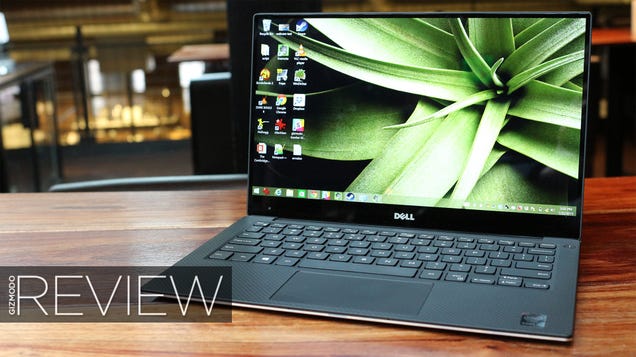
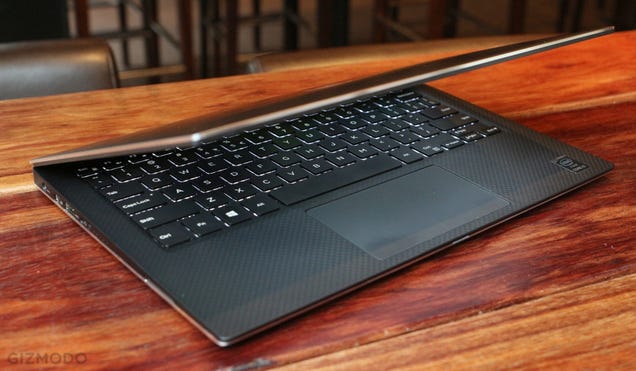
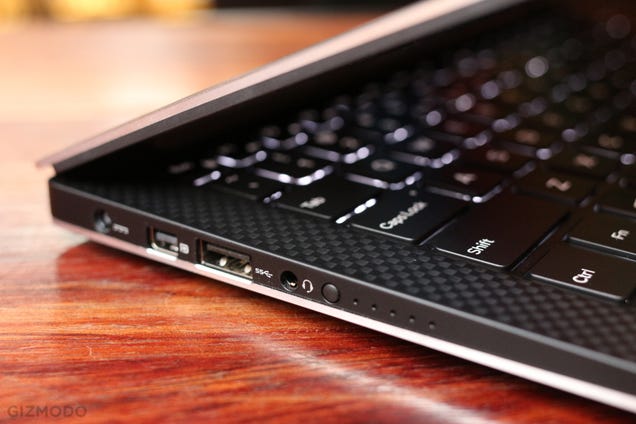
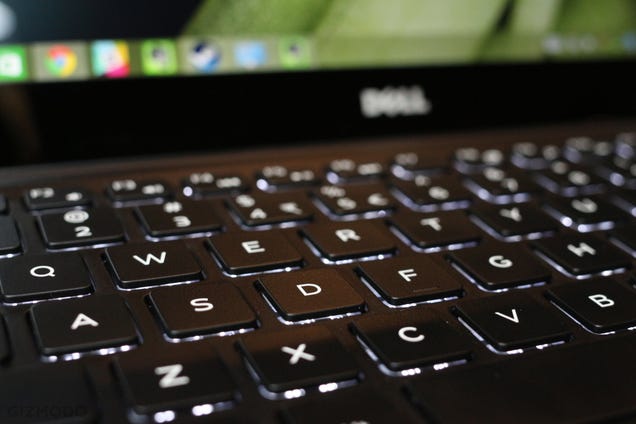
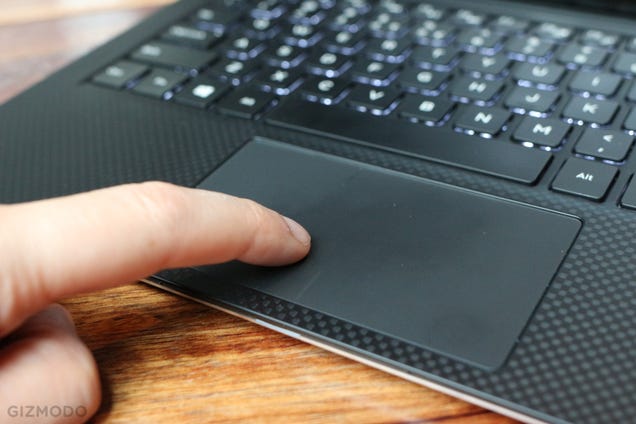


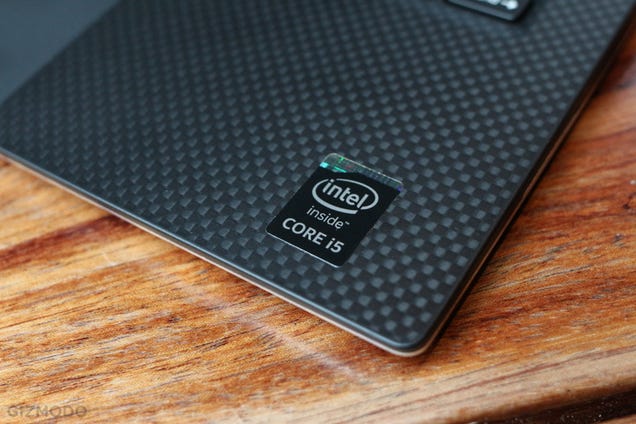
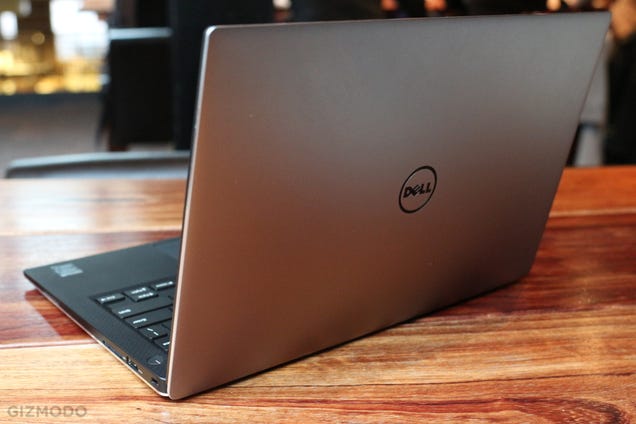
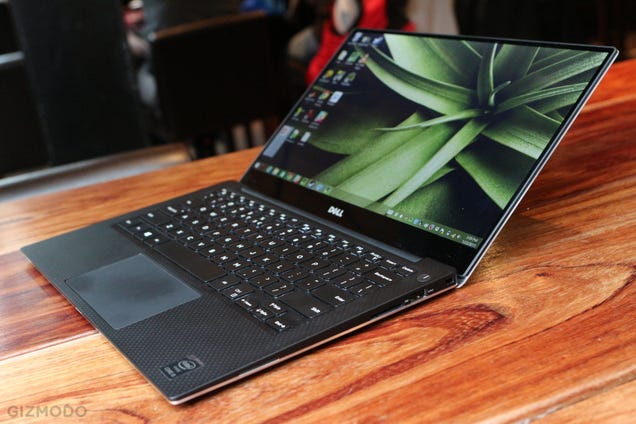
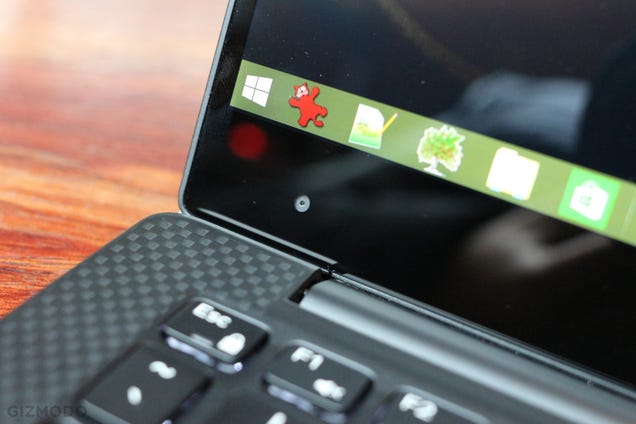
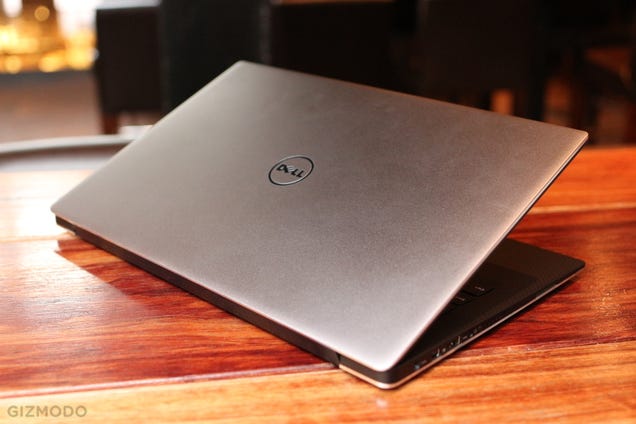












No comments:
Post a Comment
Please leave a comment-- or suggestions, particularly of topics and places you'd like to see covered